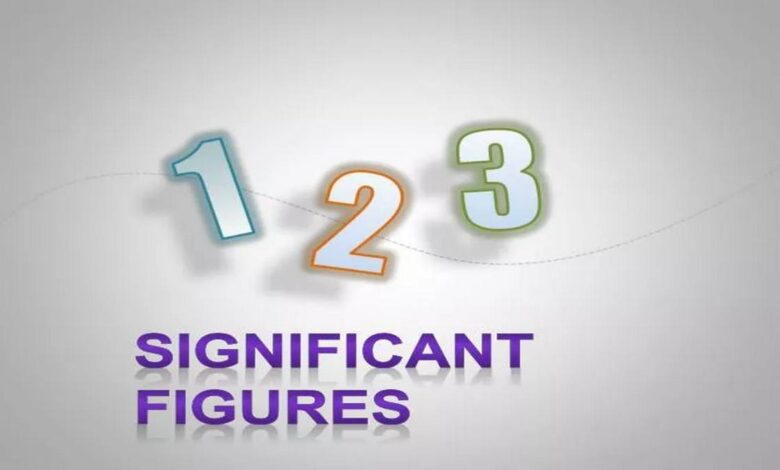Mastering Significant Figures: Online Calculators Make it Easy

In the world of science and mathematics, precision is key. Significant figures (or “sig figs”) play a vital role in communicating the accuracy of measurements and calculations.
Understanding and correctly calculating significant figures can be a tricky concept to grasp, especially when dealing with complex operations. However, a number of sig figs calculator platforms offer a simple and efficient solution, helping you to master this essential skill.
What are Significant Figures?
Significant figures are the digits in a number that reliably contribute to its degree of accuracy. They help scientists and mathematicians express the level of confidence they have in a particular measurement. There are a few essential rules to determine which digits are significant:
- All non-zero digits are significant: For example, the number 358.4 contains four significant figures.
- Zeros between non-zero digits are significant: In the number 2006, all four digits are significant.
- Leading zeros are not significant: The number 0.0035 has only two significant figures (3 and 5).
- Trailing zeros after a decimal are significant: The number 12.50 has four significant figures.
- Trailing zeros without a decimal point may be ambiguous: To avoid confusion, use scientific notation to express the correct number of significant figures (e.g., 300 can be written as 3.0 x 10^2 for two sig figs).
Why Do Significant Figures Matter?
Significant figures are essential because they avoid misleading levels of precision. Imagine a scale that can only measure weight to the nearest pound. Reporting a measurement from this scale as 150.005 pounds would be inaccurate as the scale cannot provide that level of detail. Properly using significant figures ensures that calculations and reported measurements accurately reflect the limitations of the instruments used.

Challenges With Significant Figures
Remembering the various rules and applying them correctly during calculations can become increasingly challenging, especially with complex numbers and multiple operations.
Mistakes in significant figure calculations can lead to inaccurate results and misunderstandings in scientific communication.
Enter Online Significant Figures Calculators
This is where online significant figures calculators shine. These tools simplify the entire process and provide the following benefits:
- Automation: They automatically analyze numbers and perform calculations adhering to the rules of significant figures.
- Accuracy: Calculators eliminate human error and ensure precise results.
- Time-saving: No more manual counting and double-checking – get answers quickly.
- Learning Tool: They reinforce concepts by showing how calculations are performed.
How to Use a Significant Figures Calculator
Using an online significant figures calculator is incredibly easy:
- Choose your calculator: Find one that suits your preference.
- Input your numbers: Enter the numbers you want to calculate with or the result of a previous calculation.
- Select the operation: Choose the mathematical operation you want to perform (+, -, x, /).
- Specify desired sig figs (optional): Some calculators allow you to set the number of significant figures you want in the answer.
- Calculate: The calculator will display the result, rounded to the correct number of significant figures.
Examples
Here are a few examples to illustrate the concepts of significant figures and how online calculators can be helpful:
Example 1: Addition and Subtraction
- Problem: You add 123.45 and 0.0333. A regular calculator gives you 123.4833.
- Significant Figures: The least precise measurement (0.0333) has four digits after the decimal. Therefore, the answer should be rounded to four decimal places.
- Calculator Solution: An online sig fig calculator would display the answer as 123.4833.
Example 2: Multiplication and Division
- Problem: You divide 76.54 by 0.12. Your calculator shows 637.8333333.
- Significant Figures: The number with the fewest sig figs (0.12) has two. Thus, the answer should be rounded to two significant figures.
- Calculator Solution: The calculator would give you the answer as 640.
Example 3: Complex Calculations
- Problem: Calculate the following: (4.55 x 10.0) / 0.00123
- Significant Figures: There are varying levels of precision: three in 4.55, two in 10.0, and three in 0.00123. The least precise limits your final answer.
- Calculator Solution: A sig fig calculator will follow the order of operations and display the result with the correct number of sig figs, likely around 37000.
Additional Notes
- Scientific Notation: When dealing with very large or very small numbers, scientific notation often clarifies significant figures. A sig fig calculator can help with conversions.
- Uncertainty: In advanced applications, scientists may track uncertainty alongside sig figs. Some specialized calculators may assist with this, but it’s a more complex topic.
Practice Makes Perfect
The best way to get comfortable with significant figures is to try various calculations yourself. Here are a few problems you can solve using a sig fig calculator:
- Add 15.23 + 1.2 + 0.0054
- Multiply 98.76 x 2.1
- Divide 1234.56 by 0.123
If you’re looking to start from the basics, here’s an educational video that can help you in that:
Conclusion
Mastering significant figures is essential for accurate communication in scientific and mathematical fields. Online significant figures calculators provide a powerful tool to streamline calculations, eliminate errors, and save valuable time.
Whether you’re a student struggling with chemistry homework or a seasoned researcher double-checking complex results, these calculators offer an invaluable solution. By familiarizing yourself with the rules of significant figures and leveraging the power of online tools, you’ll ensure precision and clarity in all your calculations.